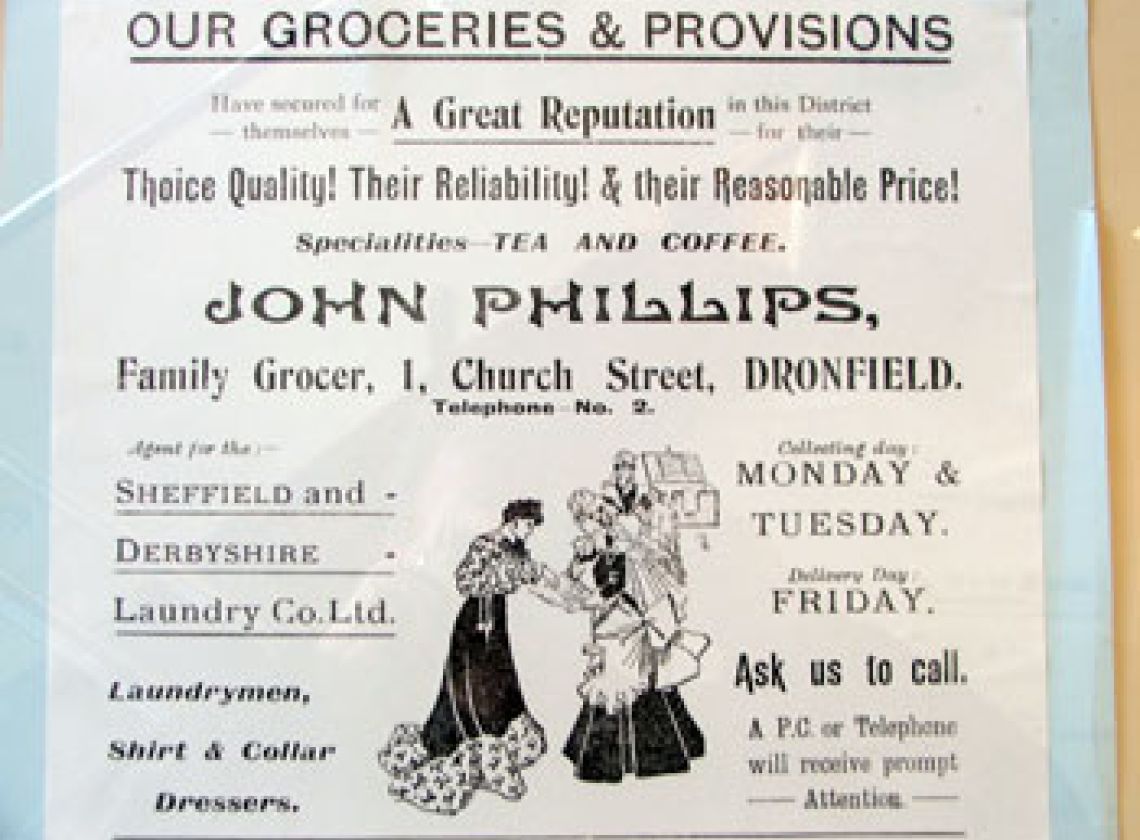History
Working in the Corner Shop
I had a friend, Dorothy Phillips, whose father owned a very large high class grocer's shop.
I had heard that they were looking for a girl to train for the shop so I applied and got the job. I wasn't much older than fourteen (in 1914). I had to train for a year before actually working in the shop itself. It was a corner shop, partly on Lea Road and around the corner into Church Street. The Lea Road side was used by Mr John Phillips, the owner. This was the warehouse storing goods such as dried fruit.
Behind the shop was a long place (building). On one side was all windows which looked over the yard, it had benches round three sides, the other leading into the back of the shop. This was known as the bake-house, I don't know why - maybe it had been a bake-house in earlier year (yes it had!). This is where I worked. On my first day my very first job was to sprinkle the shop floor with water and then sweep it up. Next I would dust all the biscuit cases, three long ones, each having a glass case. They were sold by the pound and some were very expensive.
Then I went through the back door to the bake-house. All the dried fruit was packaged tightly together like on solid square in wooden crates and had to be cleaned. This was one of my first jobs. There were three or four riffles like garden sieves in different sizes and finer mesh. I had to have a tin of water, put my hand in it and rub round and round a few currants at a time. These were done on the first riddle, they had to be rubbed and cleaned until all the stalks were removed and the currants were nice and plump. They were then placed in a bowl and the next batch was started. This was a long job and when we had cleaned a fair amount we would weigh them in pounds and half pounds. The raising were next and this whole process could take days and days. There was a large window overlooking the yard and being able to look out made things more pleasant. Just outside was a large stone water trough where the horses went to drink. There was one horse named Tom. If his stable door was left open you would have to run through the yard because he would come after you.
My next job was to weigh out the sugar into noe and two pound bags, which were blue in colour and rather thick and rough. Once the sugar was weighed and bagged, the top had to be tucked and made very secure. We then had to stack them with three bags laid side by side long ways and two along the bottom, then vice versa on the next two rows, and so on. This way we could build up a large stock. I often stayed after tea with Dorothy and we would weigh up quite a lot of sugar and as we both did singing for charity, we would sing along while we worked, sometimes doing duets and we really enjoyed ourselves.


Plan Your Visit
The Forge Shopping Centre is open
Monday - Saturday
10am - 5pm
The Forge Shopping Centre
Church St, Dronfield, S18 1QX
Find out more